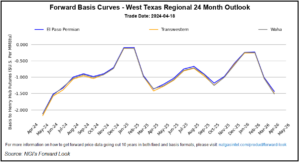Regulatory | NGI All News Access | NGI The Weekly Gas Market Report
Trump Administration Altered Social Cost of Carbon Formula to Support Deregulation, Say Critics

The federal government’s current social cost of carbon estimates, which are used to calculate regulatory impact analyses for energy and other projects, are far lower than its prior estimates, due to Trump administration changes to the formula, according to a report from the U.S. Government Accountability Office (GAO).
While both current and previous were calculated using the same economic models, the Trump administration uses domestic climate change damages in its estimates, rather than the previously used global climate change damages, and also uses different discount rates (3% and 7%, compared with the previous 2.5%, 3% and 5%), GAO said in an 88-page report issued Tuesday.
“As a result, the current federal estimates, based on domestic climate damages, are about seven times lower than the prior federal estimates that were based on global damages (when both prior and current estimates are expressed in 2018 U.S. dollars and calculated using a 3% discount rate),” GAO said.
Previous estimates found the social cost of carbon per metric ton at $50 in 2020 and $82 by 2050, while current estimates place the cost at $7 this year and $11 in 2050.
The changes have allowed the administration to create cost-benefit analyses that support its efforts to allow power plants and automobiles to emit greater amounts of greenhouse gases, according to critics.
The report comes in response to a December 2017 request from eight Democratic lawmakers, led by Sen. Sheldon Whitehouse (D-RI).
GAO recommended that the Office of Management and Budget identify a federal entity responsible for addressing previous recommendations of the National Academies of Sciences, Engineering and Medicine for updating the methodologies used to develop federal estimates of the social cost of carbon to ensure federal estimates reflect the best available science.
“Climate change is a massive threat to our economy. That threat will only grow in years to come, even if we take the action necessary to avoid the worst effects of climate change,” Whitehouse said Tuesday. “We need a social cost of carbon pegged to the best available science to plan and adapt. Instead, the Trump administration undermined the social cost of carbon, and then stuck its head in the sand when the federal government’s top scientists recommended implementing important changes. Shutting off the headlights of science and sound economics makes it more likely that we’ll drive straight off a climate cliff.”
Just weeks after taking office in 2017, President Trump signed an executive order calling for sweeping changes in the energy sector, including an immediate reevaluation of the Environmental Protection Agency’s (EPA) proposed Clean Power Plan, lifting restrictions on oil, gas and coal production, and a review of the social cost of carbon methodology for crafting regulation.
In 2018, EPA went through a public process to revamp its cost-benefit analysis for regulatory decisions, saying at the time that “many have complained that the previous administration inflated the benefits and underestimated the costs of its regulations through questionable cost-benefit analysis.”
GAO based its report on its review of documents and interviews with officials from EPA, the Bureau of Land Management and the National Highway Traffic Safety Administration.
© 2024 Natural Gas Intelligence. All rights reserved.
ISSN © 1532-1231 | ISSN © 2577-9877 | ISSN © 1532-1266 |


